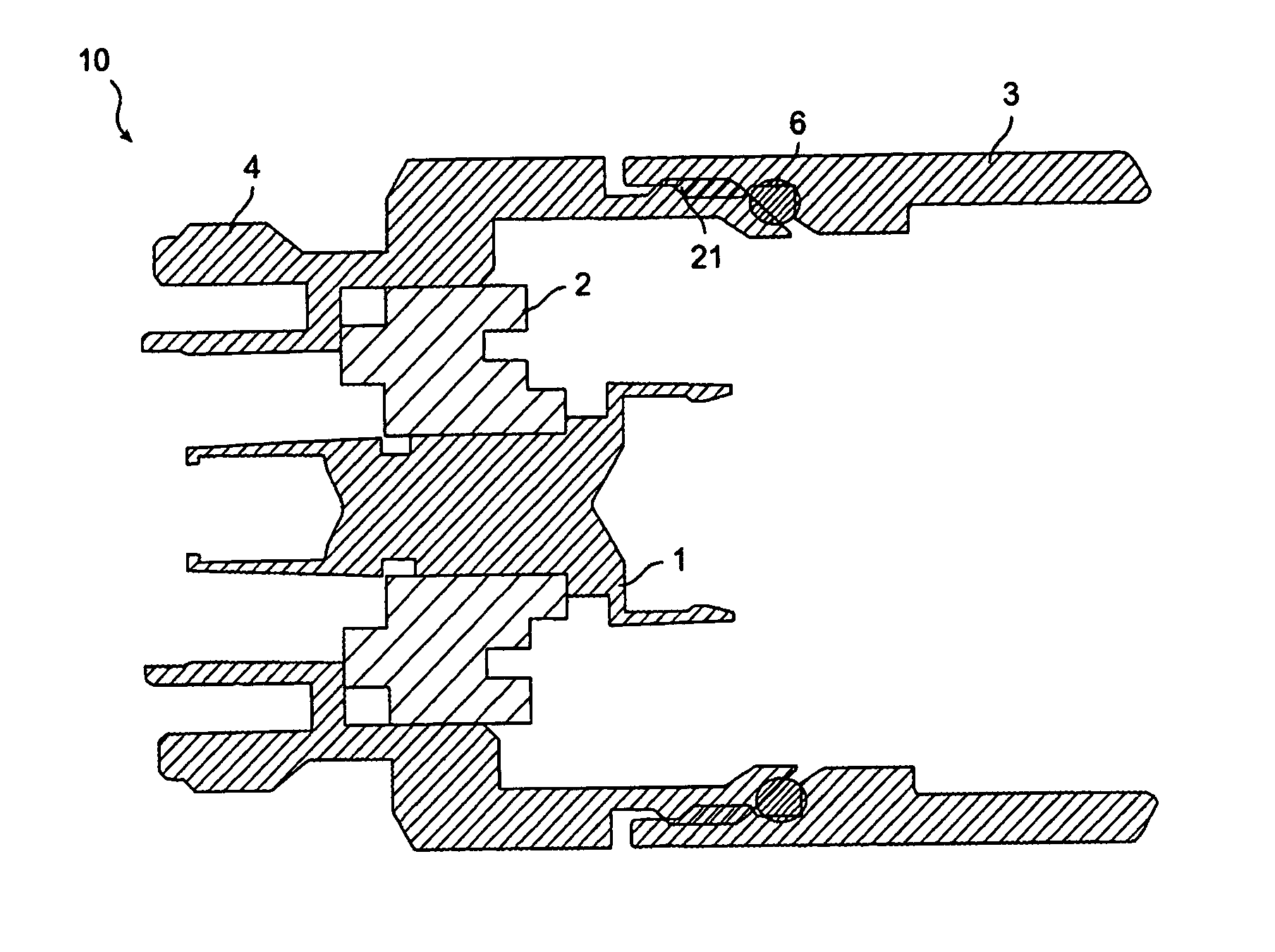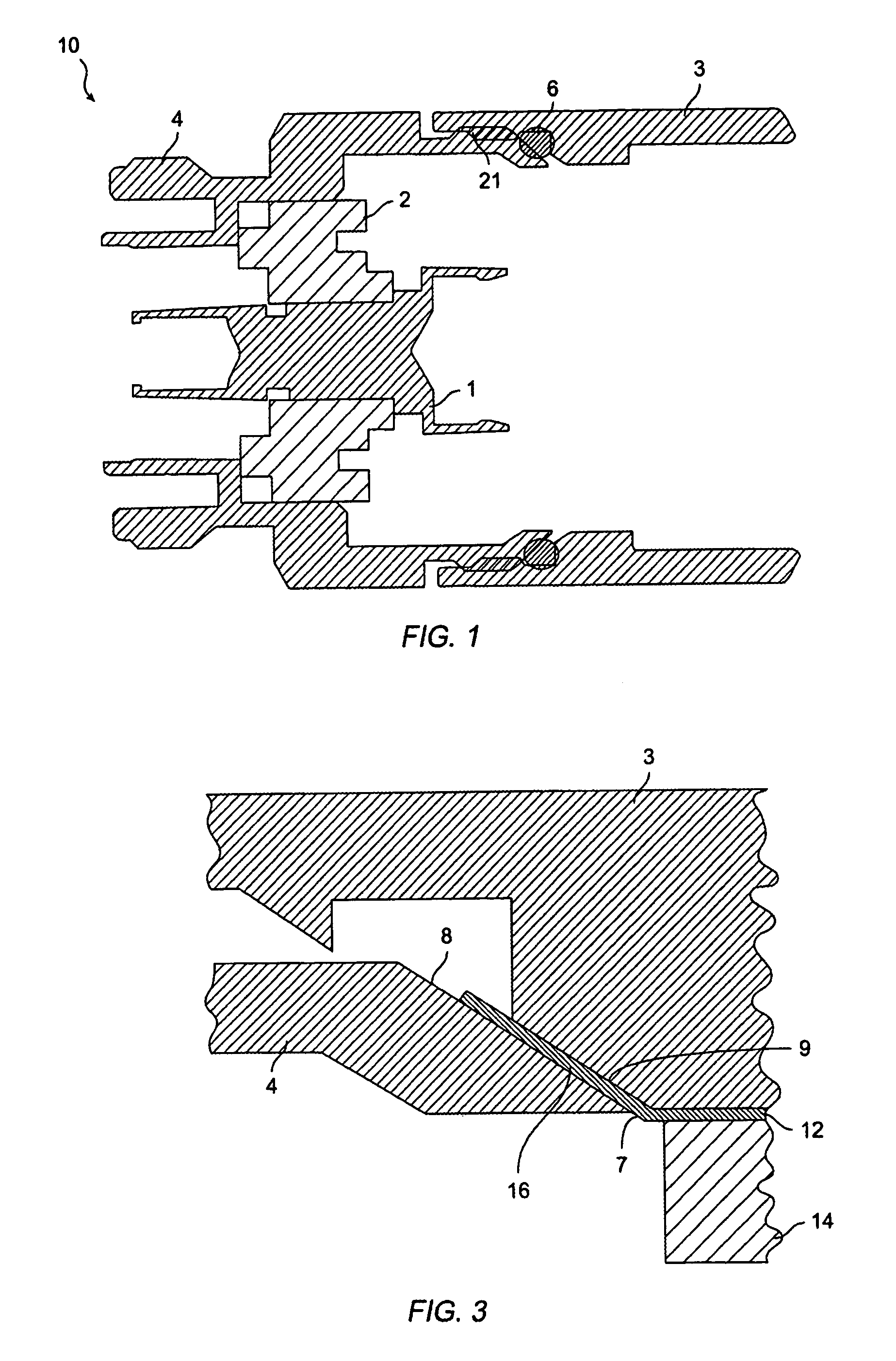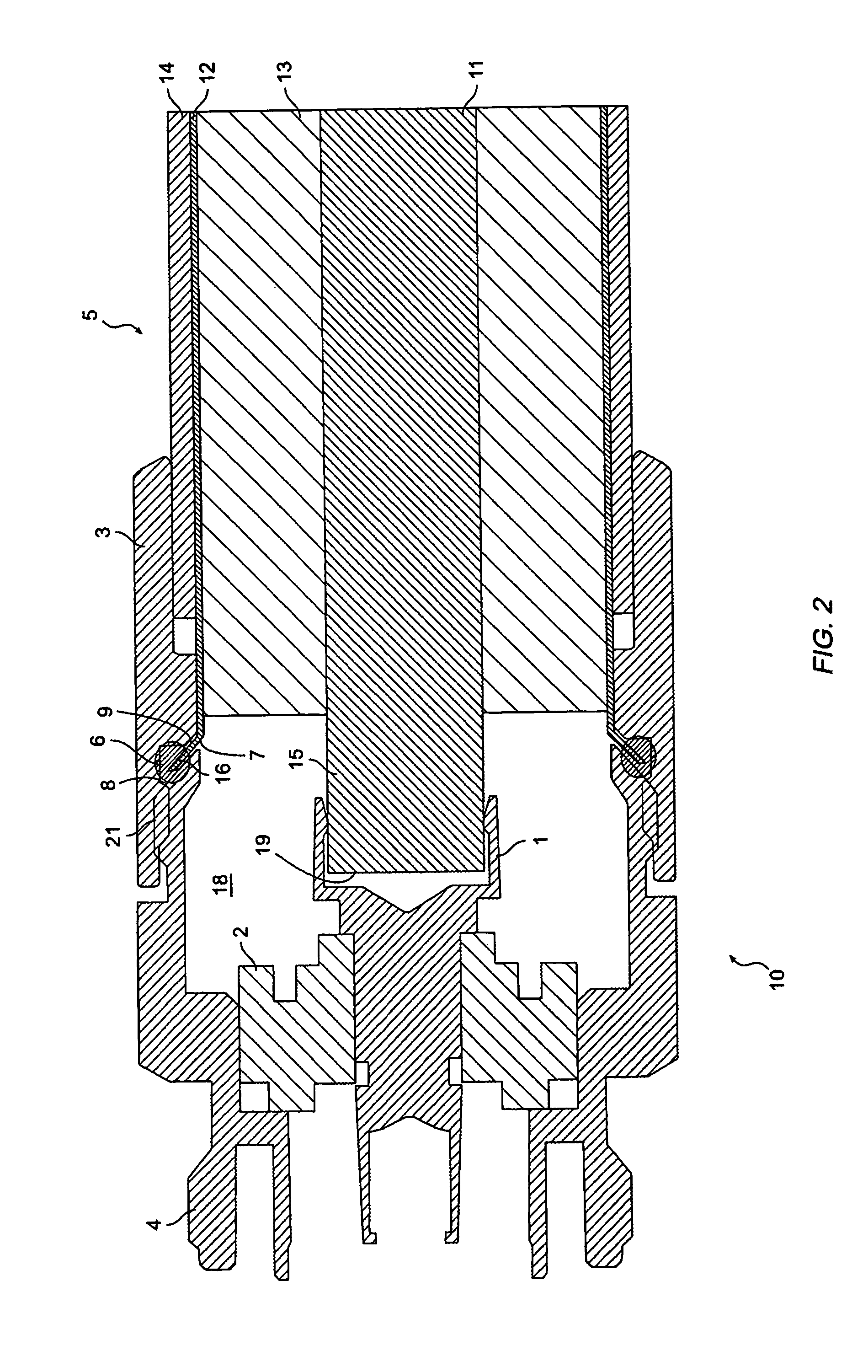Coaxial connector and method
a technology of coaxial cable and connector, which is applied in the direction of coupling device connection, basic electric elements, electrical equipment, etc., can solve the problems of poor electrical connection, increased risk of connector malfunction and mounting problems, and large number of moving parts in the back nut portion, so as to reduce manufacturing costs and assembly time, and simplify the design
- Summary
- Abstract
- Description
- Claims
- Application Information
AI Technical Summary
Benefits of technology
Problems solved by technology
Method used
Image
Examples
second embodiment
[0022] the cable may be mounted without removing either the cable's jacket or dielectric. The steps for mounting, according to this method, are as follows: first, an end portion of the cable is inserted through back nut 3. A tool is then used to pry the end portion of the cable's outer conductor away from the dielectric and flare it outwardly, as mentioned above. The inner conductor of the coaxial cable is then inserted into inner terminal 1 of the connector as described above, and back nut 3 is screwed over outer terminal 4 until there is a mechanical stop, leaving the end portion of the cable securely clamped between faces 8 and 9 of the outer terminal 4 and back nut 3. The cable can be mounted according to this method as long as there is a sufficient contact between the outer conductor portion 7 and face 8 of outer terminal 4.
third embodiment
[0023] the cable is mounted by removing the dielectric within the exposed end of the coaxial cable, but not the cable jacket. This is a combination of the two previous embodiments. The steps for mounting the cable are as follows: first, a sufficient amount of dielectric material is removed from the end portion of the cable. The exposed end of the coaxial cable is then inserted through the central aperture of back nut 3. The end of outer conductor portion 7 is again flared outwardly. The inner conductor 15 of the coaxial cable is then inserted into inner terminal 1 of the connector, as described above. The back nut 3 is then longitudinally displaced, as by screwing back nut 3 onto outer terminal 4, so that the flared outer conductor and adjoined insulating jacket are clamped securely between the outer terminal's contact face 8 and the abutting back nut face 9.
[0024]Those skilled in the art will note that the above-described connector is of extremely simple design and requires a minim...
PUM
 Login to View More
Login to View More Abstract
Description
Claims
Application Information
 Login to View More
Login to View More - R&D
- Intellectual Property
- Life Sciences
- Materials
- Tech Scout
- Unparalleled Data Quality
- Higher Quality Content
- 60% Fewer Hallucinations
Browse by: Latest US Patents, China's latest patents, Technical Efficacy Thesaurus, Application Domain, Technology Topic, Popular Technical Reports.
© 2025 PatSnap. All rights reserved.Legal|Privacy policy|Modern Slavery Act Transparency Statement|Sitemap|About US| Contact US: help@patsnap.com



